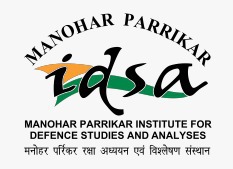China’s Foray into Sri Lanka and India’s Response
China’s foray into Sri Lanka in recent years has somewhat heightened India’s engagement in the island nation, separated by the small stretch of the Palk-Strait
- R N Das
- August 05, 2010
The East Asia Centre is dedicated to study and research the domestic and foreign policies of individual countries of the region as well as India’s multifaceted relationships with these countries. With respect to China, the Centre’s research foci are its foreign policy (particularly towards the US, Russia, Central Asia and Asia Pacific), domestic politics, economy, the People’s Liberation Army (PLA), Tibet Autonomous Region (TAR) and India’s relationship with China in all its dimensions. The Centre’s research also focuses on Taiwan, its domestic politics, Sino-Taiwanese relationship and Indo-Taiwanese relationship, Hong Kong and India-Hong Kong relations. Japan and Korea are the other major focus of the Centre, with its research focused on their domestic politics, foreign policy and comprehensive bilateral relationships with India. The geopolitics of the Asia Pacific and the Korean peninsula are also studied in the Centre.
The centre brings out five monthly newsletters: East Asia Military Monitor, Japan Digest, China Science and Technology, Korea Newsletter, and China Military Digest.
No posts of Books and Monograph.
No posts of Jounral.
China’s foray into Sri Lanka in recent years has somewhat heightened India’s engagement in the island nation, separated by the small stretch of the Palk-Strait
The UNSC statement is more a testimony to Sino-US compromise arrived at after nearly a month and half of negotiations rather than being a “diplomatic victory” as has been hailed by North Korea.
While the economies of China and Taiwan are getting integrated and there has been increasing contact between the people across the strait, the two sides are maintaining a studied silence on unification.
There is no denying that Myanmar has an ongoing nuclear research programme but whether it has the intention of developing nuclear weapons remains unclear.
In a strong rebuke to the Kan government, voters deprived the DPJ and its tiny ally of a majority less than a year after the party swept to power.
Nationalistic imaging of the People’s Republic based on the Han identity could be the biggest obstacle to the pluralist solution that the contemporary situation in Xinjiang requires.
The issue at stake is the US upholding and expanding its role as the key shaper of geopolitics in Northeast Asia, and China unwilling to be sidelined by the United States.
That the Futenma issue is still a sore subject for the ruling DPJ-led government is reflected in the fact that it has decided not to field a candidate in Okinawa in the upcoming election.
While the effect of regionalism has begun to wane, the propensity of youth to vote against specific issues that they deem not beneficial is likely to be the dominant cleavage in South Korean politics.
The sculpting of a strategic partnership and inking of a Comprehensive Economic Partnership Agreement show that South Korea is keen to engage India on matters where their mutual interests converge.



